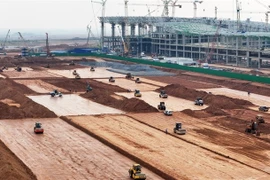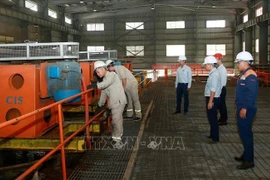Hanoi (VNA) – Vietnam’s labour market has experienced steady growth in both size and quality, moving towards modernisation, sustainability, and international integration. As a key pillar of the economy, the market requires the ongoing reforms to enhance flexibility, efficiency, and long-term stability.
Effective mobilisation and utilisation of human resources
In recent years, the Ministry of Labour, Invalids and Social Affairs has introduced comprehensive measures to develop the labour market and meet business manpower needs. Efforts to bridge labour supply and demand have been intensified, especially through linking labour market information between regions with abundant manpower and key economic centres. Job fairs, employment loan programmes from the national fund, and other preferential credit sources have been effectively implemented.
Employment service centres have been restructured to improve labour supply-demand regulation and strengthen connections between workers and businesses. Labour management is increasingly integrated with national population databases and other related systems.
Thanks to these coordinated efforts, the market has remained stable, providing sufficient workforce for industrial parks, export processing zones, and other key economic regions.
According to the General Statistics Office, in 2024, Vietnam’s labour force aged 15 and above reached nearly 53 million, an increase of over 575,000 people compared to the previous year. The number of employed workers rose to 51.9 million, marking a 1.1% increase (or 585,000 workers).
Addressing challenges
The Ministry recognises that recent employment policies have made significant strides in developing a structured labour market and creating sustainable jobs.
These policies have not only generated jobs but also supported labour restructuring across regions and industries, assisted disadvantaged workers in entering the labour market, and promoted the transition from informal to formal employment. They also help adapt to population ageing and emerging trends like green and fair employment. As a result, approximately 1.5-1.6 million jobs are created annually, with the overall unemployment rate remaining below 3% and urban unemployment under 4%.
Vietnam’s overseas labour programme has made significant progress in expanding markets, and workforce scale and quality. Currently, more than 700,000 Vietnamese workers are employed abroad under contracts, earning stable incomes and sending back home around 3.5-4 billion USD annually. Meanwhile, foreign labour management ensures a balance between domestic and migrant workers, meeting the demand for high-quality personnel.
However, challenges persist as some industrial parks and export processing zones have reported mild labour shortages, particularly in low-skilled sectors like textile and electronics assembly, mainly due to increased year-end orders and businesses not proactively securing additional workforce.
Moreover, while employment figures are rising, the sustainability of the labour market is still in question given high informal employment. The quality of the labour supply also also falls short of the demands of a modern, dynamic, and globally integrated job market. Currently, about 37.8 million workers lack formal vocational training, with only 28.1% holding certifications.
Enhancing labour supply-demand connectivity
Minister of Labour, Invalids and Social Affairs Dao Ngoc Dung highlighted the need to refine policies to better integrate employment programmes with social insurance and unemployment insurance. Digital transformation is being accelerated to improve labour market connectivity, employment data systems, and public employment services. Developing a comprehensive labour and employment database, integrated with the national population registry and other related systems, is a crucial step forward.
Furthermore, labour standards and vocational skills policies are being refined for various industries. The government is working to foster stable and progressive labour relations, while also strengthening workplace safety regulations, especially in high-risk sectors.
Labour relations and wage management policies will be aligned with market demands and global standards. The government will closely monitor labour organisations to ensure compliance with their intended roles, preventing disruptions to political stability and social order.
For the 2026-2030 period, the development strategy will focus on modernising labour structures, reducing informal employment, and expanding access to sustainable job opportunities. The government plans to review policy beneficiaries and increase social credit funding to support job creation and livelihoods for vulnerable groups, with public employment programmes to be implemented more effectively to ensure inclusive economic growth./.
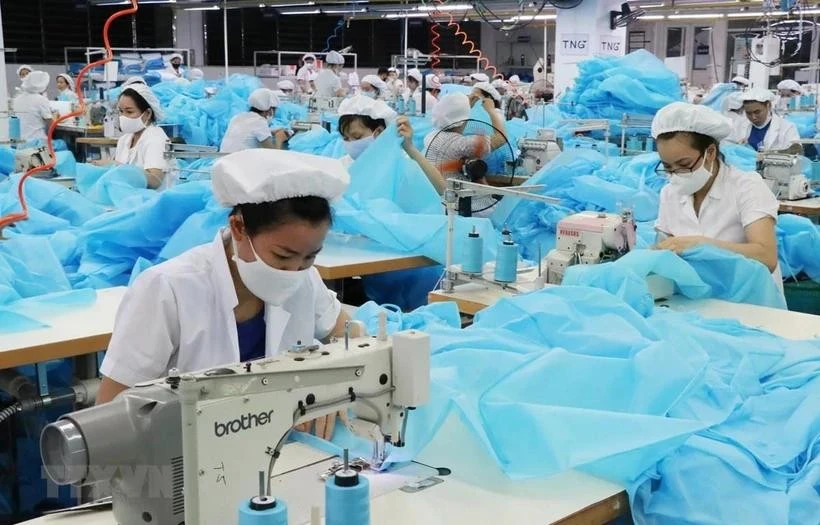
See more
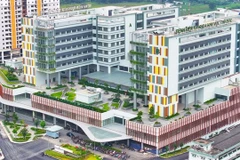
Three new public hospitals to open in HCM City this year
Three regional general hospitals being built at the entrances to Ho Chi Minh City will open to patients this year, and they are expected to help reduce overloading at major public hospitals.
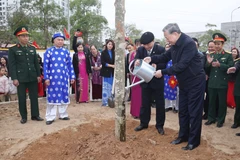
Party chief attends tree planting festival in Hung Yen province
Since 2022, Hung Yen has planted a total of 126,633 trees, surpassing the target by 173.5%, with 38,404 trees planted in 2024 alone, 60% higher than the target.
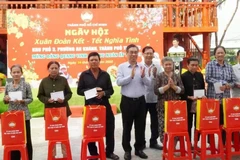
HCM City presents Tet gifts worth 110 billion VND to poor, policy beneficiaries
Nearly 200,000 gift packages worth about 110 billion VND (4.36 million USD) were provided for disadvantaged people and policy beneficiary families in Ho Chi Minh City on the occasion of the Lunar New Year (Tet).

Job market to surge in 2025, technology and sustainability leading the way
TopCV predicts that roles such as software developers, data analysts and cybersecurity engineers will dominate the labour market in the technology sector, while manufacturing and logistics industries are expected to prioritise recruitment of automation engineers, supply chain managers and quality control specialists to optimise processes and integrate new technologies.

HCM city’s urban area master plan approved
Thu Duc city will be an area leading the HCM City’s economy and other metropolitan areas through knowledge-based economic activities such as training, research, high-tech production and development cooperation.
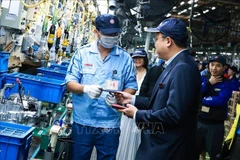
Over 95% of labourers in Hanoi return to work after Tet
As many as 356 out of 365 enterprises with 147,872 labourers working in industrial and export processing zones in the capital city have resumed operations.

PM orders civilised, safe, economical practices in festive activities
The PM directed relevant ministries and sectors to strictly enforce directives and regulations on security, safety, maintain a joyful yet orderly atmosphere in festive activities, and ensure compliance with laws on festival management and organisation.
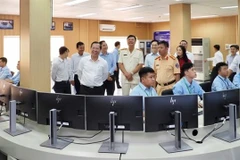
HCM City to establish transportation data centre
Chairman of the Ho Chi Minh City People's Committee Phan Van Mai has asked the city Urban Traffic Management Centre (UTMC) to establish a transportation data centre by 2026 with a deadline of 2027.

NA Chairman attends art performance marking 95th anniversary of CPV
The performance is a chance to honour the Party and remember President Ho Chi Minh, and generations of Party leaders and fallen heroes who dedicated their lives to national independence and the well-being of the people.
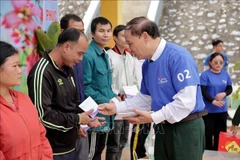
Tet 2025: Communities come together to spread joy, support
According to local Departments of Labour, Invalids and Social Affairs, over 13.5 million people nationwide benefited from this outpouring of support. The total budget for this endeavour exceeded 7.943 trillion VND, up 181 billion VND from the previous year.
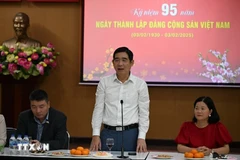
CPV’s 95th anniversary celebrated in Thailand
Vietnamese Ambassador to Thailand Pham Viet Hung described the CPV founding as a turning point in Vietnam’s revolutionary path - a moment that marked the growth of the Vietnamese working class and their readiness to lead the nation toward independence and progress.

NA Chairman outlines State Audit Office’s key tasks for 2025
NA Chairman Tran Thanh Man encouraged the State Audit Office of Vietnam (SAV) to leverage its extensive operational experience to identify gaps in policies and laws. By doing so, it can proactively propose timely amendments and improvements

Party chief’s new book spotlights Vietnam’s public security officers
The 766-page book, presented in a 24cm x 16cm format, features a foreword by the People's Public Security Publishing House and 80 carefully selected articles, speeches and interviews drawn from over 500 writings by Party General Secretary To Lam.
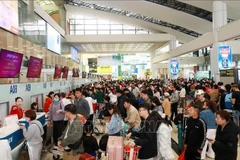
Domestic airports serve 3.6 million passengers during Tet holiday
During the Tet holiday, Tan Son Nhat International Airport served approximately 1.38 million passengers while Noi Bai International Airport processed around 900,000 passengers, and Da Nang International Airport handled over 381,000 passengers.

Former State President honoured with 65-year party membership badge
On behalf of the Party and State leaders, State President Luong Cuong presented the badge to former President Tran Duc Luong, recognising his remarkable contributions to the Party and the nation’s revolutionary cause.
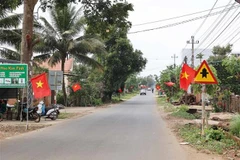
Flag road model inspires national pride
In recent years, the National Flag Road model has been widely developed across many localities in the Central Highlands province of Dak Lak, serving as a testament to the spirit of great national unity and making a practical contribution to the movements of building new-style rural areas and civilised urban areas.

Vietnamese community in France celebrates Tet
For over a decade, the Vietnamese community in France has maintained the tradition of gathering at the Lunar New Year (Tet) Market in Nogent-sur-Marne, a suburb of Paris.
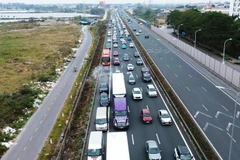
Traffic accidents drop by over 36% during Tet holiday
A total of 445 traffic accidents were reported nationwide during the nine-day Tet (Lunar New Year) holiday from January 25 to February 2, resulting in 209 fatalities and 373 injuries.

Vietnamese Tet celebration held in Japan's Higashi-Hiroshima city
A Lunar New Year (Tet) celebration was held in Higashi-Hiroshima city in Japan’s Hiroshima prefecture on February 2 or the fifth day of the Lunar New Year.

Tet celebration helps OVs in Australia uphold traditional culture
New Sunlight for Children wishes to connect with many other organisations to help uphold and popularise the Vietnamese culture and maintain annual activities, including fundraising events, to assist disadvantaged children in the homeland.
